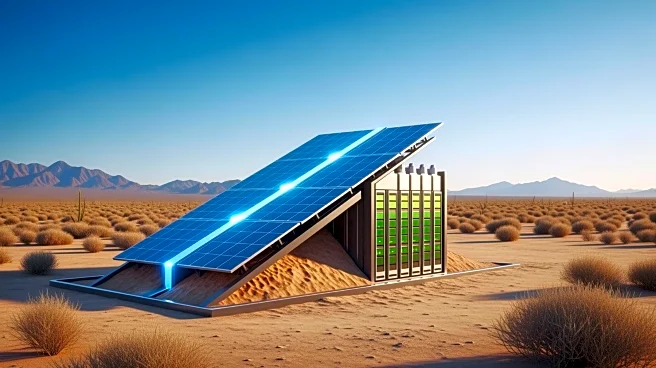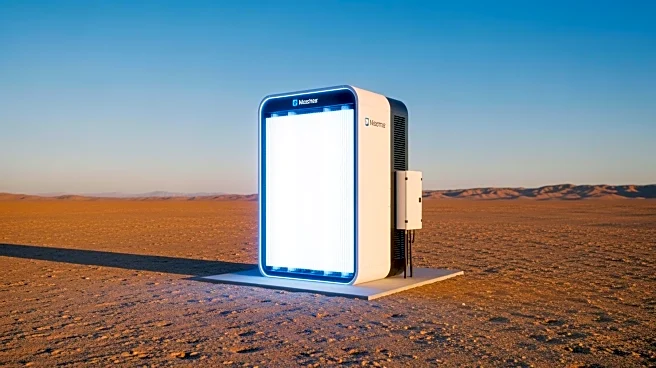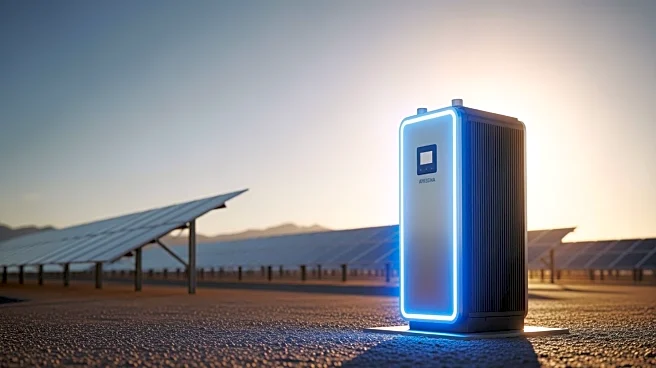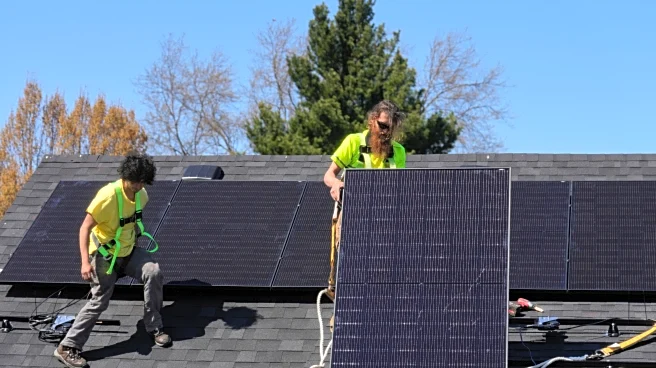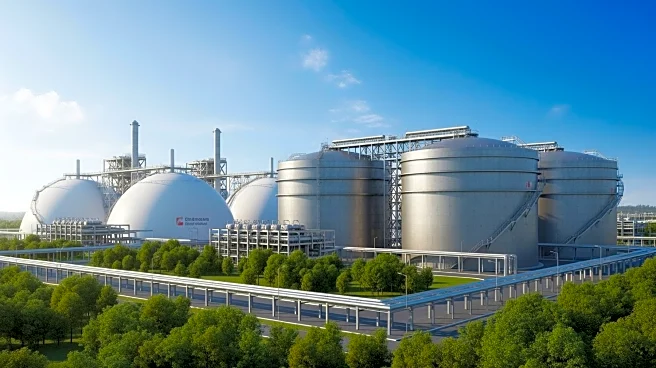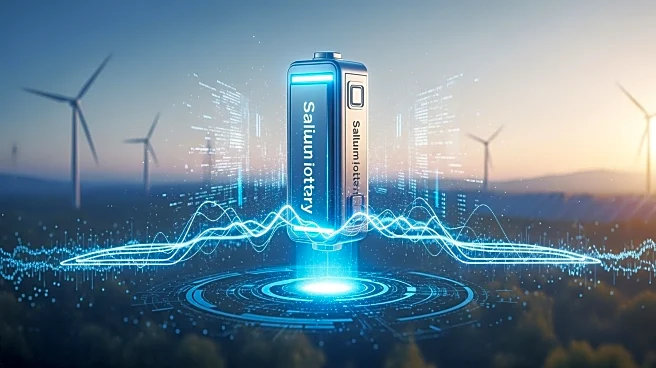What's Happening?
Torch Clean Energy is developing two 80 MW solar arrays in Cochise County, Arizona, and has selected Fluence Energy to deliver a 160 MW / 640 MWh battery system to support the renewables. The project,
known as the 'Winchester' project, is expected to be online in 2027 and will aid in grid balancing and forecasted load growth for the region. This initiative is part of a broader clean energy buildout anticipated across the United States, with the U.S. Energy Information Administration projecting domestic utility-scale battery storage to more than double by 2026, reaching nearly 65 GW. Fluence's Gridstack Pro 5000 battery will include domestically manufactured components to qualify for domestic content tax credits.
Why It's Important?
The partnership between Torch Clean Energy and Fluence Energy represents a significant step in the transition towards renewable energy sources in the U.S. The deployment of large-scale battery systems is crucial for enhancing grid reliability and supporting the integration of intermittent renewable energy sources like solar. This project not only contributes to regional economic development but also aligns with national goals to increase clean energy capacity and reduce carbon emissions. The domestic manufacturing aspect of the project supports local industries and qualifies for tax incentives, further promoting economic growth.
What's Next?
The Winchester project is set to be operational by 2027, providing a model for future solar-plus-storage facilities. As the U.S. continues to expand its renewable energy infrastructure, similar projects are likely to emerge, driven by both economic incentives and environmental goals. Stakeholders, including local governments and energy companies, may increase investments in such projects to capitalize on tax credits and support sustainable development.
Beyond the Headlines
The integration of battery storage with solar power not only enhances energy reliability but also represents a shift towards more sustainable energy practices. This development could influence policy decisions and encourage further investment in renewable energy technologies, potentially leading to advancements in energy storage solutions and increased adoption of clean energy across various sectors.
